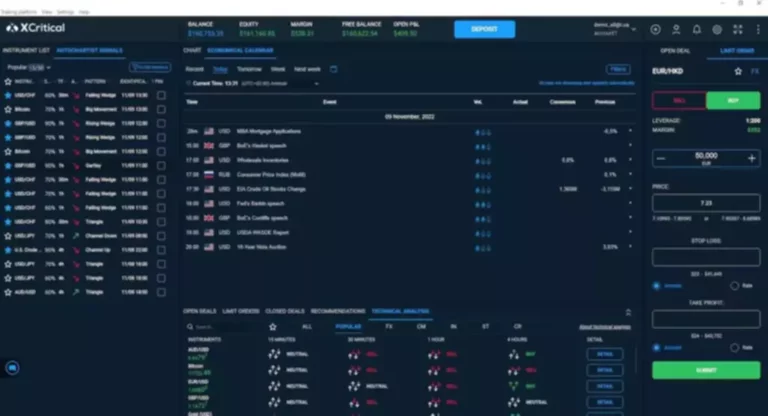In truth, there are multiple other motivations for developers to go for burning cash. A blockchain is a report of a cryptocurrency’s transactions, and its consensus algorithm is the method in which that it confirms transactions. The two hottest consensus algorithms are proof of work and proof of stake; proof of burn is a more recent alternative. Developers can claim to burn tokens after they’re really sending those tokens to a wallet they management. To keep away from this, it’s essential to do your analysis on the crypto you’re investing in or persist with safer cryptocurrency stocks.
- Proof-of-Burn (PoB) is a consensus mechanism utilized by some cryptocurrencies.
- There is not any evidence but that burning cryptocurrency tokens routinely will increase the value of that specific cryptocurrency.
- Token burning refers back to the follow of permanently removing cash from a cryptocurrency’s total supply.
- This process is undertaken by tasks as a method to reduce the whole supply of their tokens, thus making a “deflationary” impact.
- However, don’t expect the price to extend instantly after the burn.
With cash large and small, there’s news about how the developers burned millions, billions, or even trillions of tokens. In this article, you may learn exactly what cryptocurrency burning is and why builders do it. Proof of burn is a consensus mechanism that requires miners to burn a set amount of cash of their private possession to realize access to mine a block. By fronting a specified amount, a miner is then compensated with a block reward for verifying the transaction.
Usage-based Burning
A vital benefit of using proof-of-burn as a consensus mechanism is its energy efficiency in transaction validation and new coin technology. Advocates of PoB contemplate it an efficient means for transaction validation since it doesn’t rely upon substantial real-world sources. Often, PoB includes a cyclical strategy of producing new coins and burning a segment of the present supply. With this method, a portion of each transaction processed is burned.
In the primary 5 days after launch, holders burned 20 billion Shiba Inu tokens. Thus, the ways of burning include shedding the personal key for the address with crypto assets stored on it. Analyst Timothy Peterson from Cane Island Alternative Advisors says that 6 million BTC are considered burned.
Coin Burning Rather Than Dividends
By figuring out how coin burning works, you can better understand the cryptocurrencies that use it. With proof of burn, crypto miners need to burn their own tokens to earn the right to mine new blocks of transactions. In return, members obtain rewards in the cryptocurrency they’re mining. Burning crypto may be carried out as a consensus mechanism, referring to the encoded methods that keeps a network in agreement.
Web3 enthusiast Brandon Riley thought he was getting a loan on a singular virtual collectible—a non-fungible token (NFT)—from the elite CryptoPunks NFT collection. According to Riley’s Twitter account, nevertheless, he misunderstood the instructions on his NFT loan web site and sent his CryptoPunk to an irrecoverable vacation spot. At the time of Riley’s slip-up, CryptoPunk #685 was valued at roughly $129,000 USD. An increase in the worth of an asset due to burning just isn’t assured. Also, the project has a burn portal, ShibBurn, which rewards customers with a novel token in change for burning their SHIB cash.
Crypto Burning Effect On Worth
Stablecoins, cryptocurrencies that have their worth pegged to a certain asset (like gold or the US dollar), heavily depend on token burning. This course of helps to regulate a gradual supply of a stablecoin to make sure its price stays on the set value. The success of many altcoins can typically be attributed to their lively and dedicated burning crypto communities. Successful blockchain projects normally have numerous contributors working to boost the ecosystem, supported by investor engagement. Large-scale token burning initiatives driven by the group can act as a motivating pressure, spurring additional funding and involvement within the project.

However, don’t count on the worth to increase instantly after the burn. Price can be affected only when a sizeable portion of the availability is taken out of circulation. Even if/when that happens, different news or market situations can offset the bullish effect and put stress on the worth. For example, in a typical PoW community, such as Bitcoin, early adopters have an advantage over newcomers, as the halving occasion reduces the reward per block to cut the inflation price. When people promote these tokens to redeem the underlying assets, the tokens are routinely burned.
css-1iqe90xbox-sizing:border-box;margin:0;min-width:0;Color:#eaecef;key Points
PoB stands out for its adaptability, enabling networks to tailor incentives for miners. This versatility nurtures a robust stage of activity within the community. The PoB model, which requires coin burning for transaction validation, facilitates the generation of latest coins. This, in turn, ensures a balanced integration of each new and established network customers, promoting equitable development and participation. In cryptocurrency jargon, a coin is said to be “burned” when it’s despatched to a specialised wallet handle that exists solely for the purpose of collecting and effectively removing cash from circulation.

These specialised addresses are also known as “eater” or “burner” addresses in the crypto community. Conversely, if the price falls, tokens might be burned to regulate the provision and stabilize the price. Coin burning, as a strategy, can stimulate demand and doubtlessly elevate a coin’s price, influencing its market standing.
Additionally, burning can present certain benefits to customers, as seen within the Proof-of-Burn algorithm or marketing activities. Shiba Inu (SHIB) usually makes headlines with its significant token burning actions. To encourage investors to take part in token burning, one methodology they’ve adopted includes the use of a burn portal, introduced in April 2022. In eventualities the place token burning is automated, it’s necessary to think about how often you transact in cryptocurrencies. The impression of token burning could differ depending on particular person transaction habits.
In this model, miners are required to burn early cash and mine new cash, making it harder for early adopters to hold the cryptocurrency. The idea behind coin burning dates back to properly before cryptocurrency. When crypto burning is embedded as a half of an algorithm’s verification system, transactions are mechanically verified. These protocols save sources while sustaining a fluid, active network.
In this system, miners are required to ship a portion of their cash to a specific burner address. Notably, this technique calls for minimal sources, primarily simply the energy used for mining the coins earlier than they’re deliberately destroyed. PoB is designed to maintain up the network’s efficiency and dynamism, necessitating regular burning of cash by both miners and users.
These burns can take the type of either one-time processes or recurring occasions that are programmed from the outset. A stock buyback is when the company that issued the stock buys shares again at the market worth and reabsorbs them, lowering the variety of whole shares available within the market. While buybacks and coin burning aren’t an actual match, they’re related concepts that can serve the same targets. If you retain up with cryptocurrency at all, it won’t take lengthy to listen to about coin burning, a method of slicing a coin’s supply that turned well-liked around 2017. As you often see in cryptocurrency, it has been copied virtually endlessly since then. In an analogous method, algorithmic stablecoins routinely mint new tokens and burn them incessantly to hold up their dollar-pegged value.
Some cryptocurrency builders deliberately burn tokens to perform these duties. In fact, a few of the most popular cryptocurrency projects—such as USDC and Wrapped Bitcoin (wBTC)—wouldn’t be attainable without burning protocols. Burning cryptocurrency means completely taking a digital asset, similar to Bitcoin (BTC) or Ethereum (ETH), out of circulation. Because cryptocurrencies aren’t tangible, individuals can’t literally gentle them with a match, but the course of is equivalent to tossing dollar payments in a hearth.



